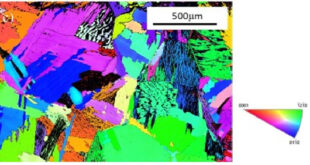Significance Statements
1. The thermal efficiencies of the subcritical OTEC power cycle depend strongly on the evaporating and condensing temperature, but not on superheating degrees and pump efficiencies.
2. For all of the fluids, R717 yielded the highest thermal efficiency, although it is toxic. It is the most preferable for the subcritical OTEC power cycle.
3. R717 in the subcritical OTEC power cycle has a more favorable working fluid, except for its toxicity and flammability.
Journal Reference
Heat and Mass Transfer. 2014, Volume 50, Issue 7, pp 985-996.
Jung-In Yoon1, Chang-Hyo Son1, Seung-Moon Baek1, Hyeon-Ju Kim2, Ho-Saeng Lee2.
1. Department of Refrigeration and Air-Conditioning Engineering, College of Engineering, Pukyong National University, San 100, Yongdang-dong, Nam-gu, Pusan, 608-739, South Korea.
2. Deep Ocean Water Application Research Center, Korea Ocean Research and Development Institute, 245-7 Oho-ri, Jukwang-myeon, Goseong-gun, Gangwon-do, 219-822, South Korea.
ABSTRACT
This paper presents an investigation into the thermal efficiency and main component size of the subcritical ocean thermal energy conversion (OTEC) power cycle using various working fluids under different operation conditions. The analysis procedure was performed with a simulation program written in Engineering Equation Solver. With the given analysis conditions, efficiencies of three types of working fluids were evaluated and compared. It was found that the thermal efficiencies of the subcritical OTEC power cycle depend strongly on the evaporating and condensing temperature, and turbine efficiency, while not roughly depending on superheating degrees and pump efficiencies. With a thorough grasp of these results, an efficient OTEC power cycle can be designed. R717 and R404A yielded the highest and lowest thermal efficiencies among the wet fluids, and R22 showed the largest efficiency among the dry fluids. For the iso-entropic fluids, R245fa provided the highest thermal efficiency. In comparison of main component sizes, R404A and R744 had the largest and smallest condenser size, respectively. Also, R744 exhibited the smallest evaporator size, and R404A and R227ea show the largest size. And R744 and R245fa gave the largest and smallest pump size, respectively. From the results of thermal efficiency and main components for various working fluids in the OTEC power cycle, R717 in the subcritical OTEC power cycle is the preferred working fluid, except for its toxicity and flammability.
 Advances in Engineering Advances in Engineering features breaking research judged by Advances in Engineering advisory team to be of key importance in the Engineering field. Papers are selected from over 10,000 published each week from most peer reviewed journals.
Advances in Engineering Advances in Engineering features breaking research judged by Advances in Engineering advisory team to be of key importance in the Engineering field. Papers are selected from over 10,000 published each week from most peer reviewed journals.

